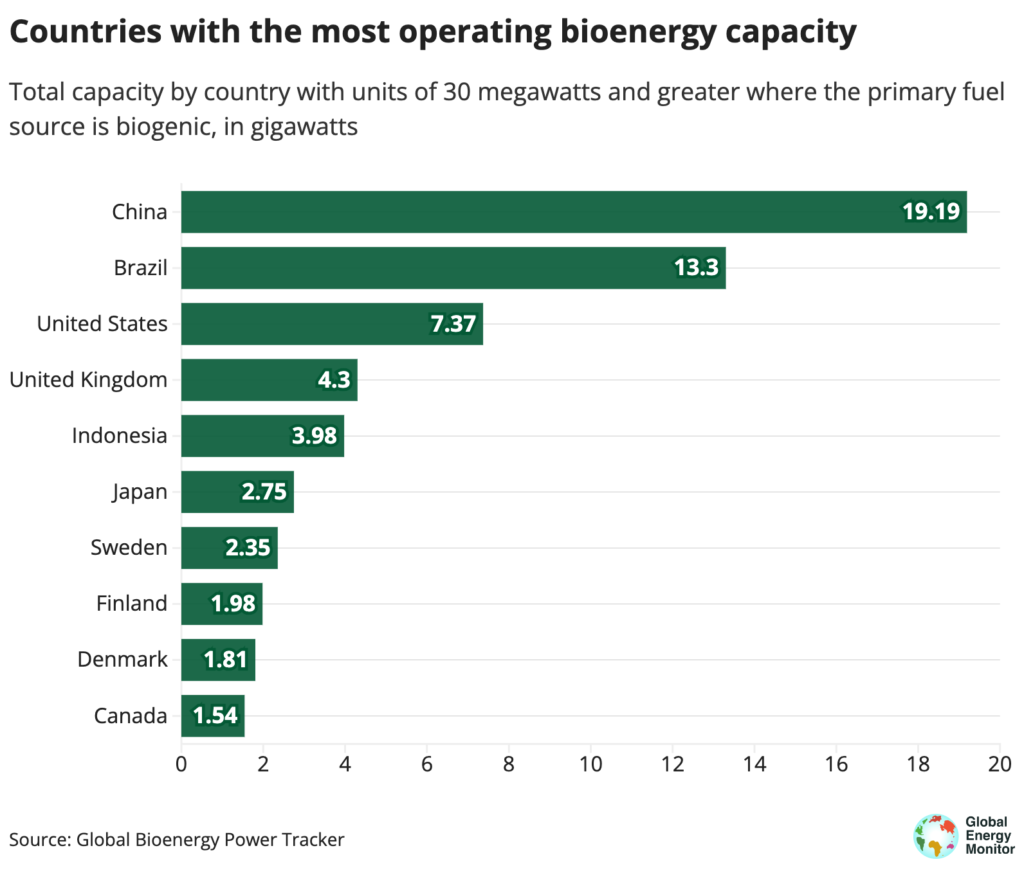San Francisco, U.S. – China accounts for over a quarter of all operating bioenergy capacity globally and nearly 40 percent of the world’s prospective capacity, according to new data from Global Energy Monitor.
The updated Global Bioenergy Power Tracker now includes a fully-researched dataset on China, where operating capacity stands at 19.1 gigawatts (GW), 27% of the global total. Total prospective capacity — projects that have been announced or are in the preconstruction and construction phase — is 7.6 GW, or 39% of the global total.

In total, the Global Bioenergy Power Tracker covers 84 countries and 1,807 units, adding up to 72.4 GW of operating capacity and 19.7 GW of prospective capacity.
The Global Bioenergy Power Tracker now also includes units that either co-fire with fossil fuels, or are co-located at power stations that combust fossils. As the International Energy Agency’s Net Zero Scenario calls for bioenergy use to more than double by 2050, the Global Bioenergy Power Tracker is an important tool to scrutinize whether the fuel is being used to extend the life of fossil, and especially coal-fired, power plants.
Ingrid Behrsin, Project Manager for the Global Bioenergy Power Tracker, said, “Burning woody biomass alongside coal is dirtier than burning coal on its own, and yet these co-firing plants are still receiving renewable energy subsidies. There is no time to sanction this type of technology and still hope to stop climate change. Calls for expanding bioenergy cannot become a cover for business as usual when it comes to coal.”
Contact
Ingrid Behrsin, Project Manager, Global Bioenergy Power Tracker
Email: [email protected]
About the Global Bioenergy Power Tracker
The Global Bioenergy Power Tracker provides information on utility-scale bioenergy power facilities worldwide. It includes bioenergy units with capacities of 30 megawatts (MW) or more. The tracker provides separate data on each of the multiple facilities that typically exist at a particular location. Each of these facilities is referred to as a “unit.” The entire collection of units at a given location is referred to as a “power station.”
